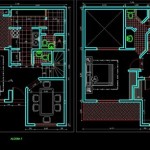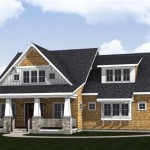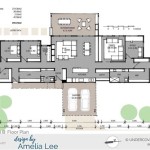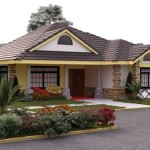```html
Home Plans Canberra: A Guide to Designing Your Dream Home
Canberra, the capital city of Australia, presents a unique landscape and building environment. Designing a home in Canberra requires careful consideration of local regulations, climate conditions, and lifestyle preferences. This article explores key aspects of home plans in Canberra, providing a comprehensive guide for those looking to build or renovate their property.
Understanding Canberra's Design Guidelines and Regulations
Building in Canberra is governed by the ACT Planning and Land Authority (ACTPLA) and adheres to the Territory Plan. This plan outlines zoning regulations, development codes, and environmental considerations that must be incorporated into all home plans. These regulations aim to ensure sustainable development, protect heritage sites, and maintain the aesthetic character of the city's diverse suburbs.
Before commencing any design work, it is crucial to thoroughly research the specific zoning regulations applicable to your property. These regulations dictate permitted building heights, setbacks from property boundaries, allowable site coverage, and landscaping requirements. Failure to comply with these regulations can result in costly delays and modifications during the approval process.
Environmental considerations are also paramount in Canberra's planning framework. Water conservation measures, energy efficiency standards, and stormwater management are often mandated. Home plans must demonstrate compliance with these requirements, potentially involving the inclusion of rainwater tanks, solar panels, and permeable paving materials.
Furthermore, Canberra has specific design guidelines for various areas, particularly those with heritage significance. These guidelines aim to preserve the historical character of these areas and may impose restrictions on the architectural style, materials, and colors used in new constructions or renovations.
Navigating these regulations can be complex, and engaging a qualified architect or building designer with experience in Canberra's planning environment is highly recommended. These professionals can provide expert guidance on interpreting the regulations and developing home plans that meet all requirements while also realizing your design vision.
Key Considerations for Climate-Responsive Design
Canberra experiences a continental climate characterized by hot, dry summers and cold winters. Effective home plans must incorporate climate-responsive design principles to maximize energy efficiency and minimize reliance on artificial heating and cooling.
Passive solar design is a cornerstone of climate-responsive architecture in Canberra. This involves orienting the building to capture sunlight during winter months to provide natural heating and shading it during summer to prevent overheating. North-facing windows are typically favored for maximizing solar gain in winter, while eaves and shading devices can be used to control sunlight exposure during summer.
Insulation is another critical factor in maintaining a comfortable indoor environment year-round. High-performance insulation materials in walls, roofs, and floors can significantly reduce heat loss in winter and heat gain in summer. Double-glazed windows are also essential for minimizing heat transfer and improving energy efficiency.
Natural ventilation is another important strategy for cooling homes in Canberra's dry summer climate. Designing for cross-ventilation by strategically placing windows and doors can allow for natural airflow throughout the building. Thermal mass materials, such as concrete or brick, can also be used to absorb heat during the day and release it at night, helping to regulate indoor temperatures.
Landscaping can also play a significant role in climate control. Planting deciduous trees on the north side of the house can provide shade during summer and allow sunlight to penetrate during winter. Evergreen trees can provide windbreaks during winter and help reduce heat loss.
Careful selection of building materials is also important. Choosing materials with high thermal mass can help regulate indoor temperatures, while using light-colored materials can reflect sunlight and reduce heat absorption. Sustainable and locally sourced materials are also preferred for their environmental benefits.
Choosing the Right Home Plan Style and Layout for Canberra
Canberra's architectural landscape is diverse, ranging from heritage-listed cottages to modern, contemporary homes. Selecting a home plan style and layout that complements the surrounding environment and meets your lifestyle needs is essential.
Modern architectural styles are prevalent in many newer suburbs of Canberra. These styles often feature clean lines, open-plan layouts, and large windows that maximize natural light. Sustainable materials and energy-efficient features are also commonly incorporated into modern home designs.
Traditional architectural styles, such as Federation or Californian Bungalow, are commonly found in older suburbs. These styles often feature intricate detailing, gabled roofs, and verandas. When renovating or extending a traditional home, it is important to respect the existing architectural character and maintain a cohesive design aesthetic.
Consider the size and shape of your block when selecting a home plan. Narrow blocks may require a different layout compared to larger, more open blocks. Consider the orientation of the block and how it will affect sunlight exposure and views.
The layout of the home should be functional and meet your family's needs. Consider the number of bedrooms and bathrooms required, as well as the size and configuration of living spaces. Think about how you will use the outdoor spaces and how they will connect to the indoor living areas.
Accessibility is another important consideration, particularly for families with young children or elderly relatives. Consider incorporating features such as ramps, wider doorways, and accessible bathrooms to ensure that the home is accessible to everyone.
Engaging a skilled architect or building designer can help you navigate these considerations and develop a home plan that perfectly suits your needs and lifestyle. They can provide expert advice on design options, material selection, and construction techniques.
Working with Building Professionals in Canberra
Building a home in Canberra requires collaboration with a team of qualified professionals, including architects, building designers, builders, engineers, and surveyors. Selecting the right team is crucial for a successful project outcome.
Architects and building designers can assist with the design and planning of your home. They can provide creative design solutions, prepare detailed drawings and specifications, and manage the approval process with ACTPLA. Architects typically have a broader range of skills and experience than building designers, and they are well-suited for complex or custom projects.
Builders are responsible for the construction of the home. It is essential to choose a builder with a proven track record of quality workmanship and adherence to building codes. Obtain multiple quotes from different builders and carefully review their references and past projects.
Engineers are involved in the structural design of the home. They ensure that the building is structurally sound and can withstand the forces of nature. A structural engineer will typically be required to design the foundation, framing, and other structural elements of the building.
Surveyors are responsible for accurately measuring and marking the boundaries of the property. They also provide information on the site's topography and any existing easements or restrictions. A surveyor is typically required before commencing any construction work.
Communication and collaboration are key to a successful building project. Establish clear lines of communication with all members of the building team and regularly meet to discuss progress and address any issues that may arise. A well-coordinated team can help ensure that the project is completed on time and within budget.
Thoroughly reviewing contracts and agreements with all building professionals is crucial. Seek legal advice if necessary to ensure that you understand the terms and conditions of the agreements and that your interests are protected.
```
Huntingdale Two Y Home Design Canberra Mcdonald Jones Homes

Cranbourne Two Y House Design Canberra Mcdonald Jones Homes

Cranbourne Two Y House Design Canberra Mcdonald Jones Homes

Regency New Homes Home Builder Canberra Mcdonald Jones Exuding Comfort And Style Th Building House Plans Designs Floor Plan Layout

Daintree 5 Bed Steel Frame Floor Plan Met Kit Homes
Multigenerational Home Designs G J Gardner Homes

Aristocrat New Home Design Canberra Mcdonald Jones Homes House Layout Plans Dream Floor

Two Story Contemporary Style House Plan 8573 Canberra

New Home Design Collections House Builders Act Canberra Mcdonald Jones

Dual Occupancy Home Designs G J Gardner Homes








